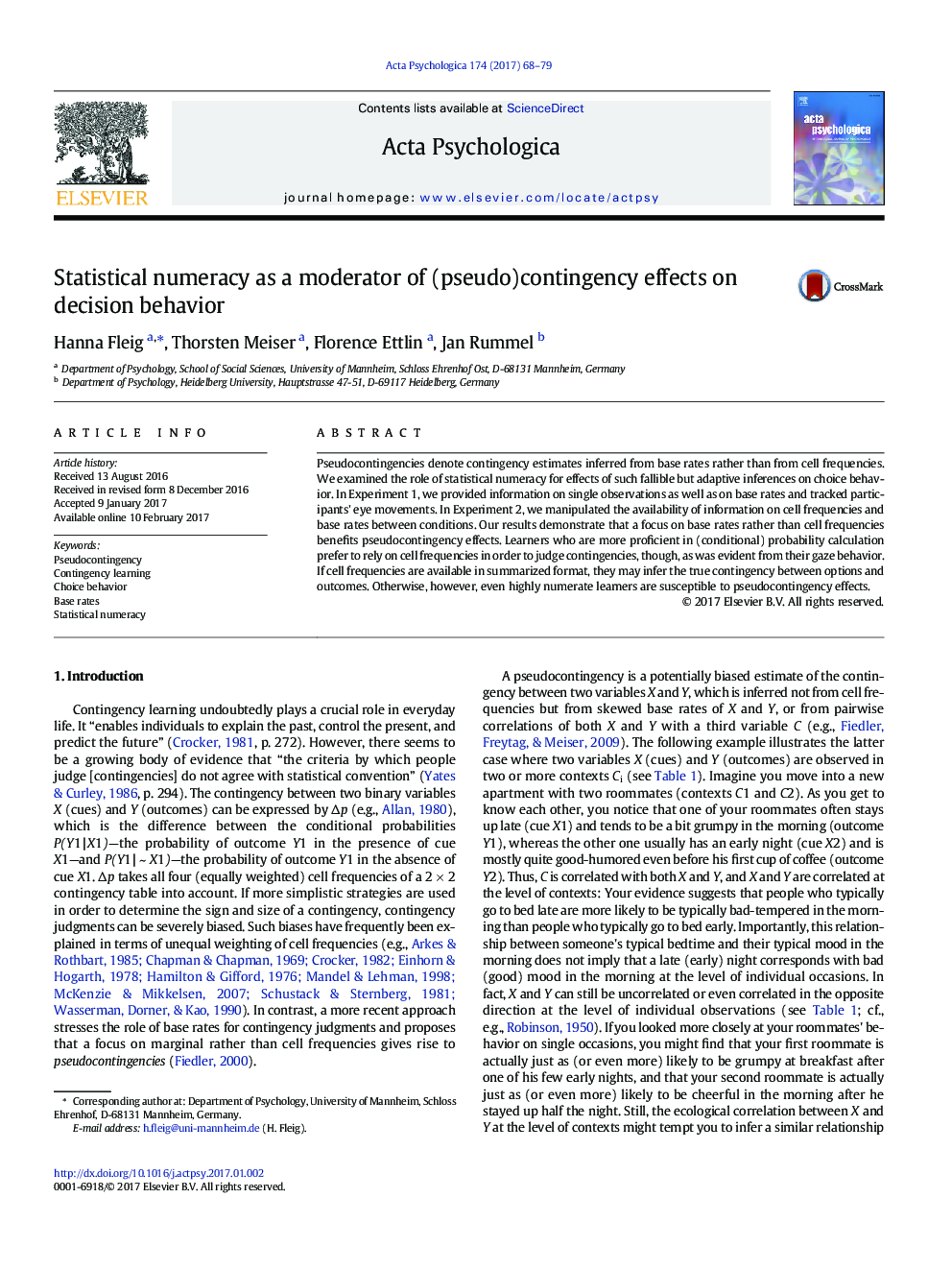| Article ID | Journal | Published Year | Pages | File Type |
|---|---|---|---|---|
| 5040242 | Acta Psychologica | 2017 | 12 Pages |
â¢Pseudocontingencies are inferred from base rates and affect choice behavior.â¢Statistical numeracy and task difficulty moderate the use of pseudocontingencies.â¢Less numerate learners are particularly susceptible to pseudocontingencies.â¢More numerate learners tend to infer contingencies from cell frequencies.â¢They rely on pseudocontingencies if cell frequencies are difficult to process.
Pseudocontingencies denote contingency estimates inferred from base rates rather than from cell frequencies. We examined the role of statistical numeracy for effects of such fallible but adaptive inferences on choice behavior. In Experiment 1, we provided information on single observations as well as on base rates and tracked participants' eye movements. In Experiment 2, we manipulated the availability of information on cell frequencies and base rates between conditions. Our results demonstrate that a focus on base rates rather than cell frequencies benefits pseudocontingency effects. Learners who are more proficient in (conditional) probability calculation prefer to rely on cell frequencies in order to judge contingencies, though, as was evident from their gaze behavior. If cell frequencies are available in summarized format, they may infer the true contingency between options and outcomes. Otherwise, however, even highly numerate learners are susceptible to pseudocontingency effects.
